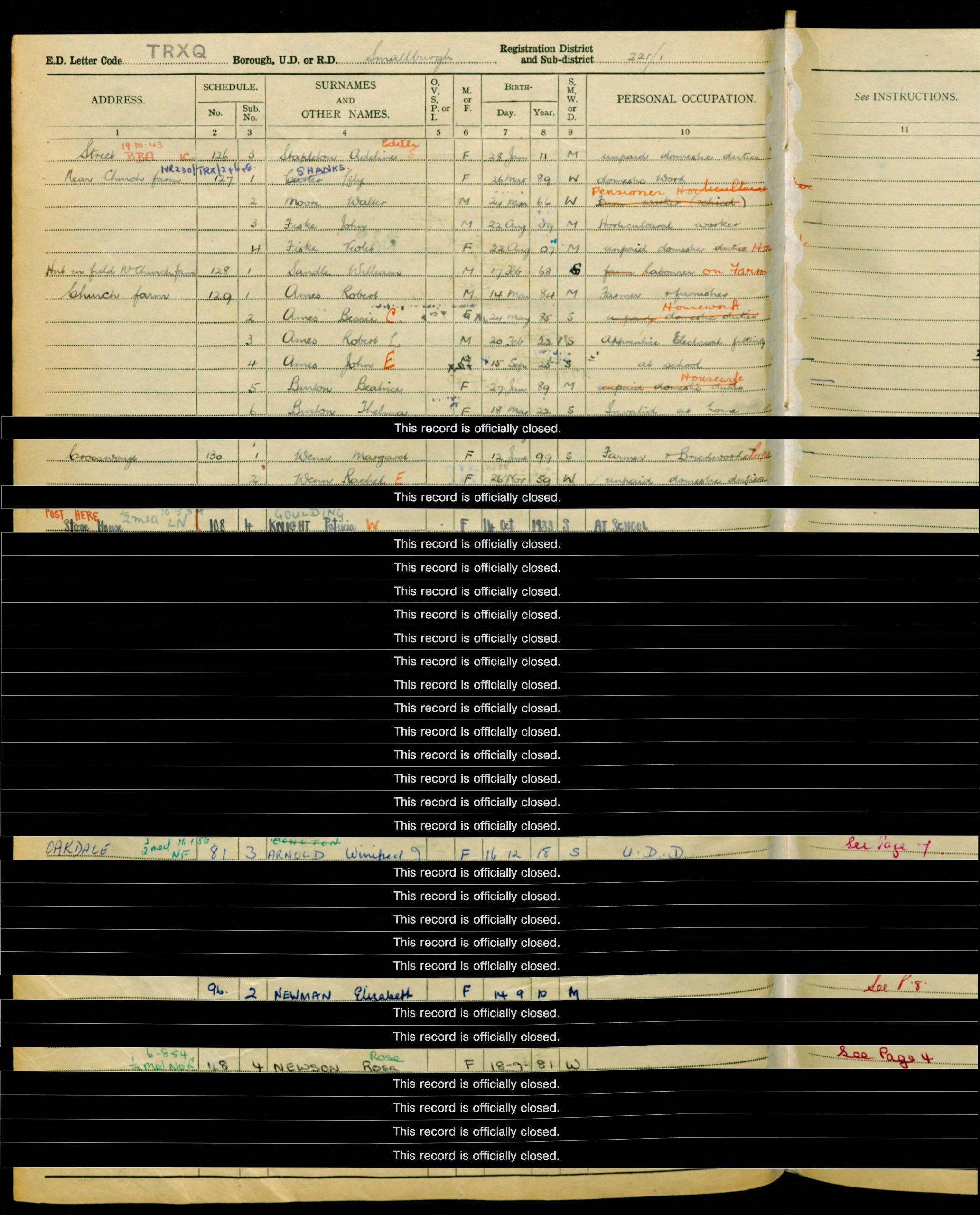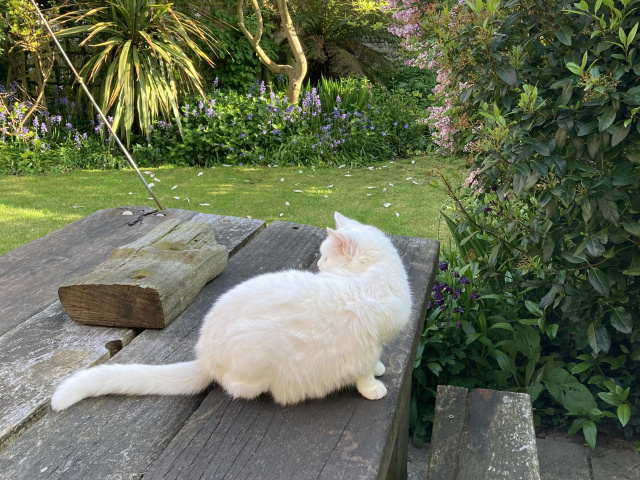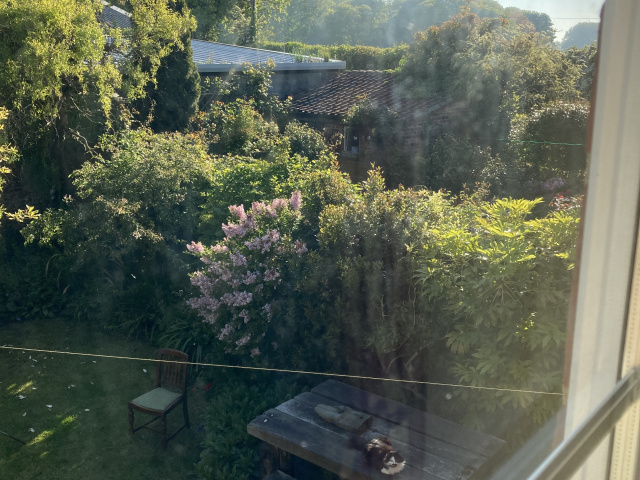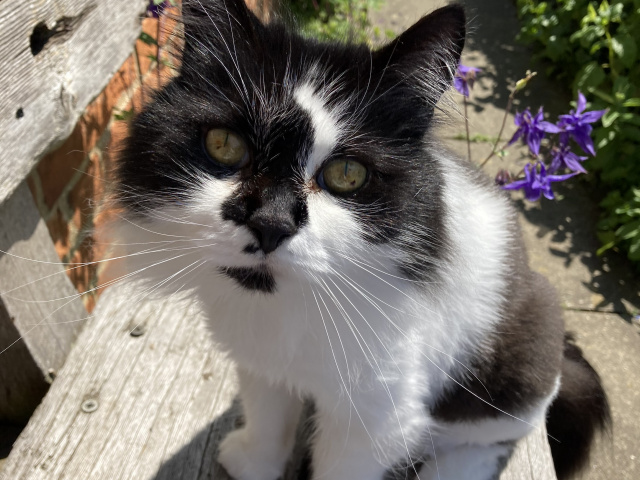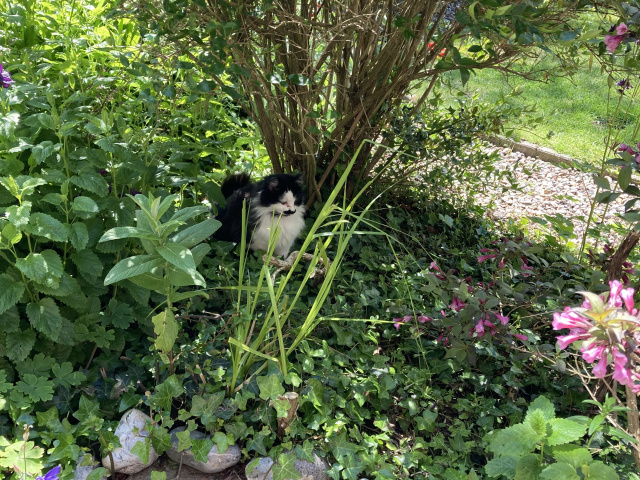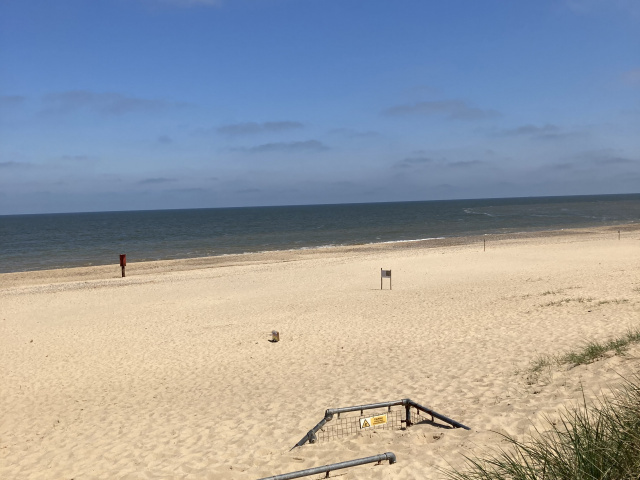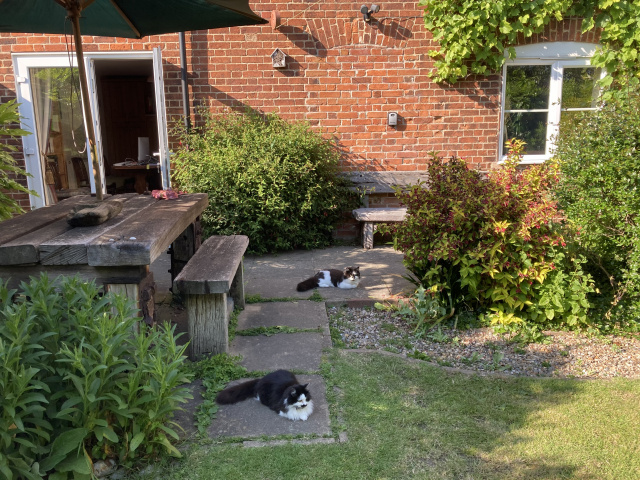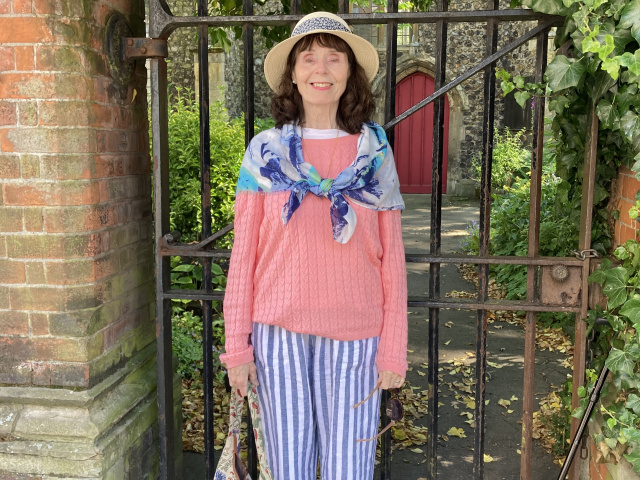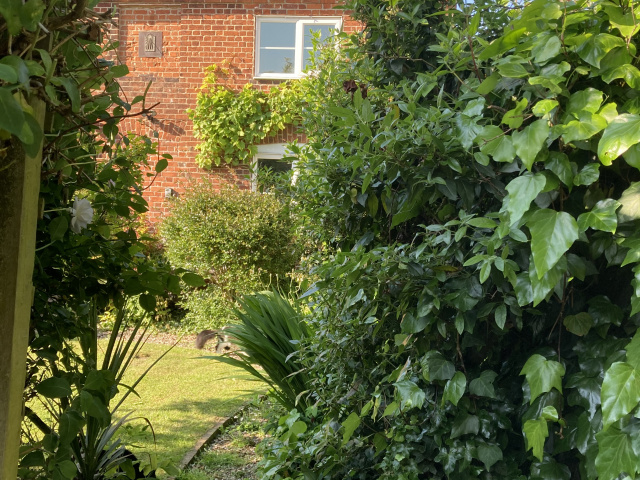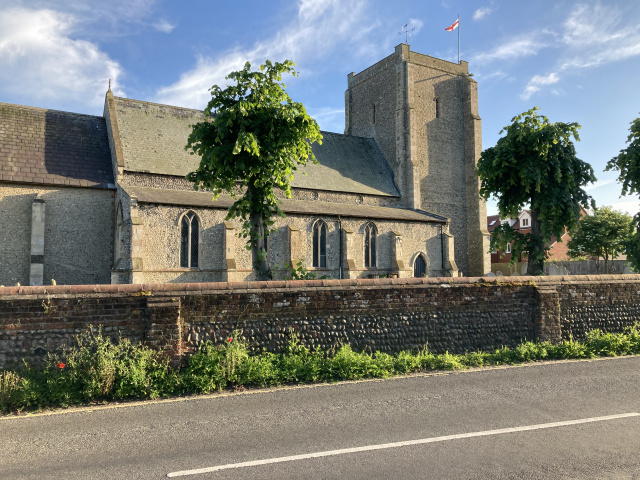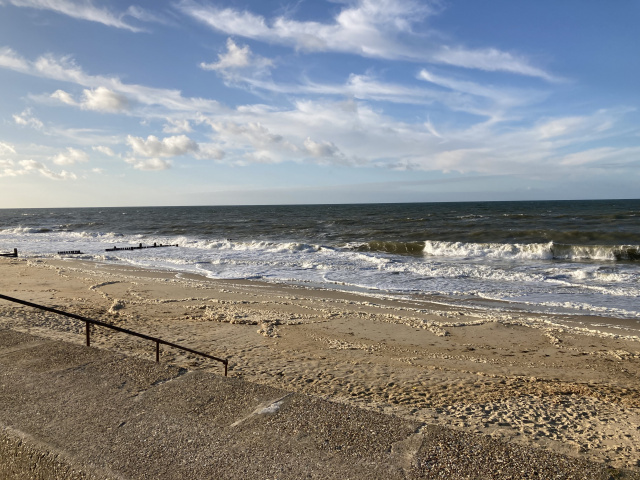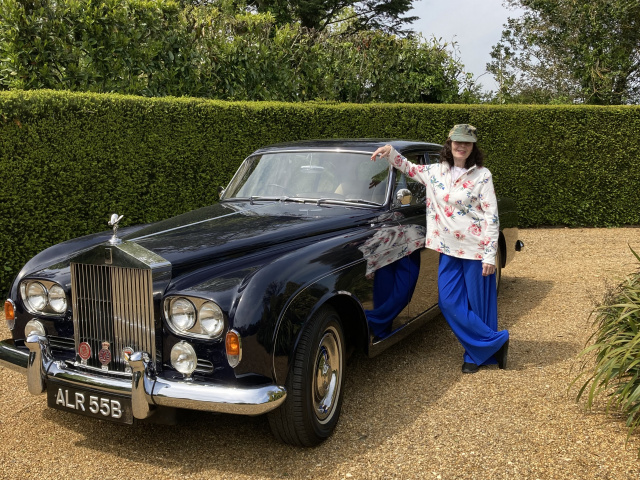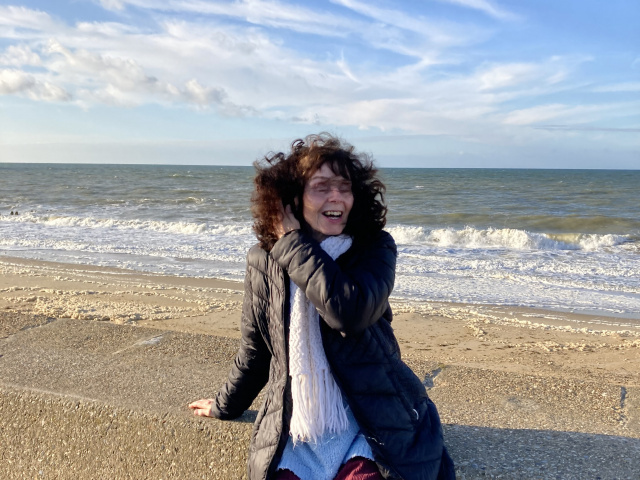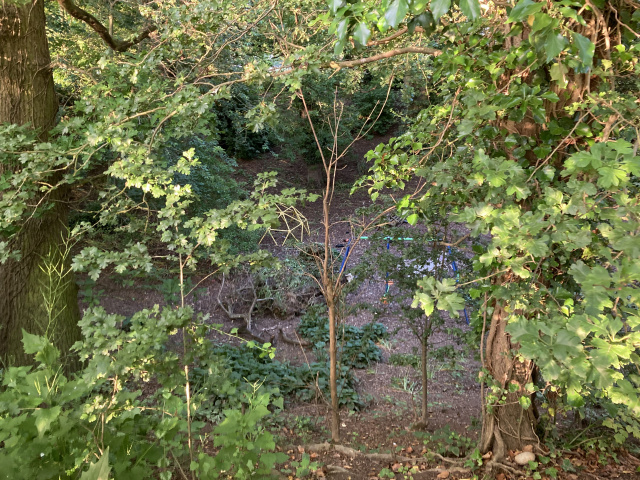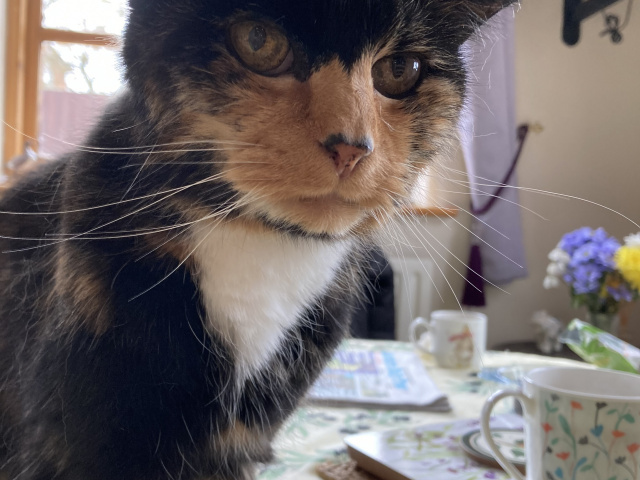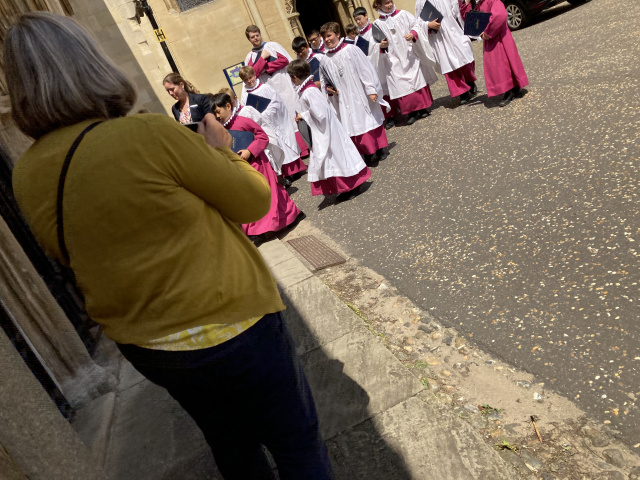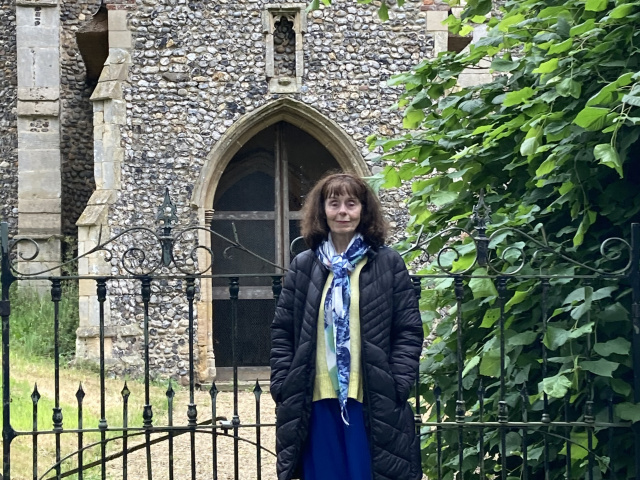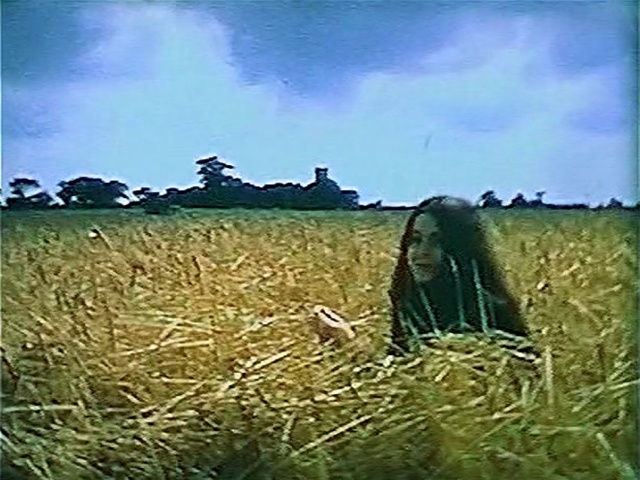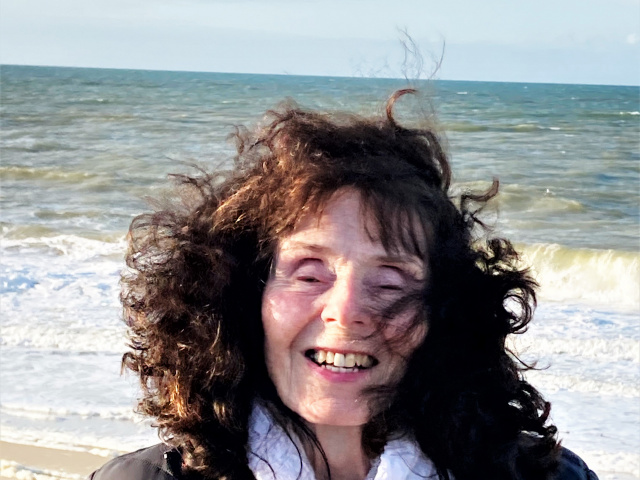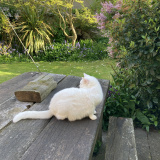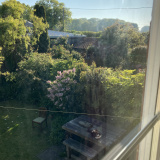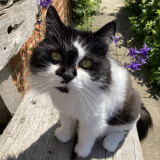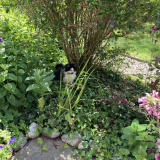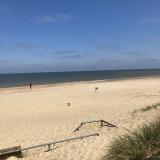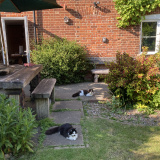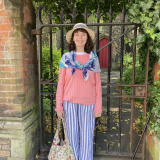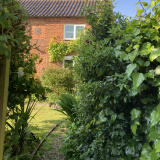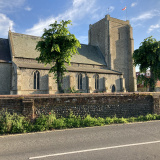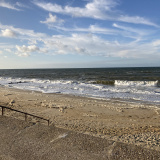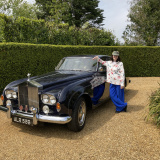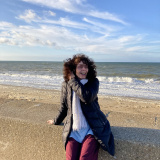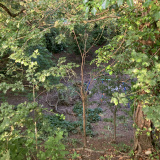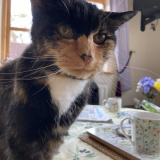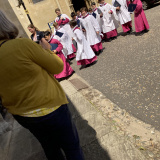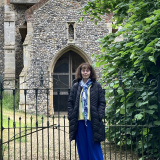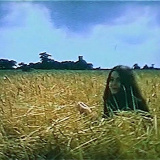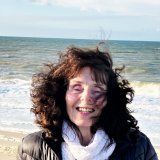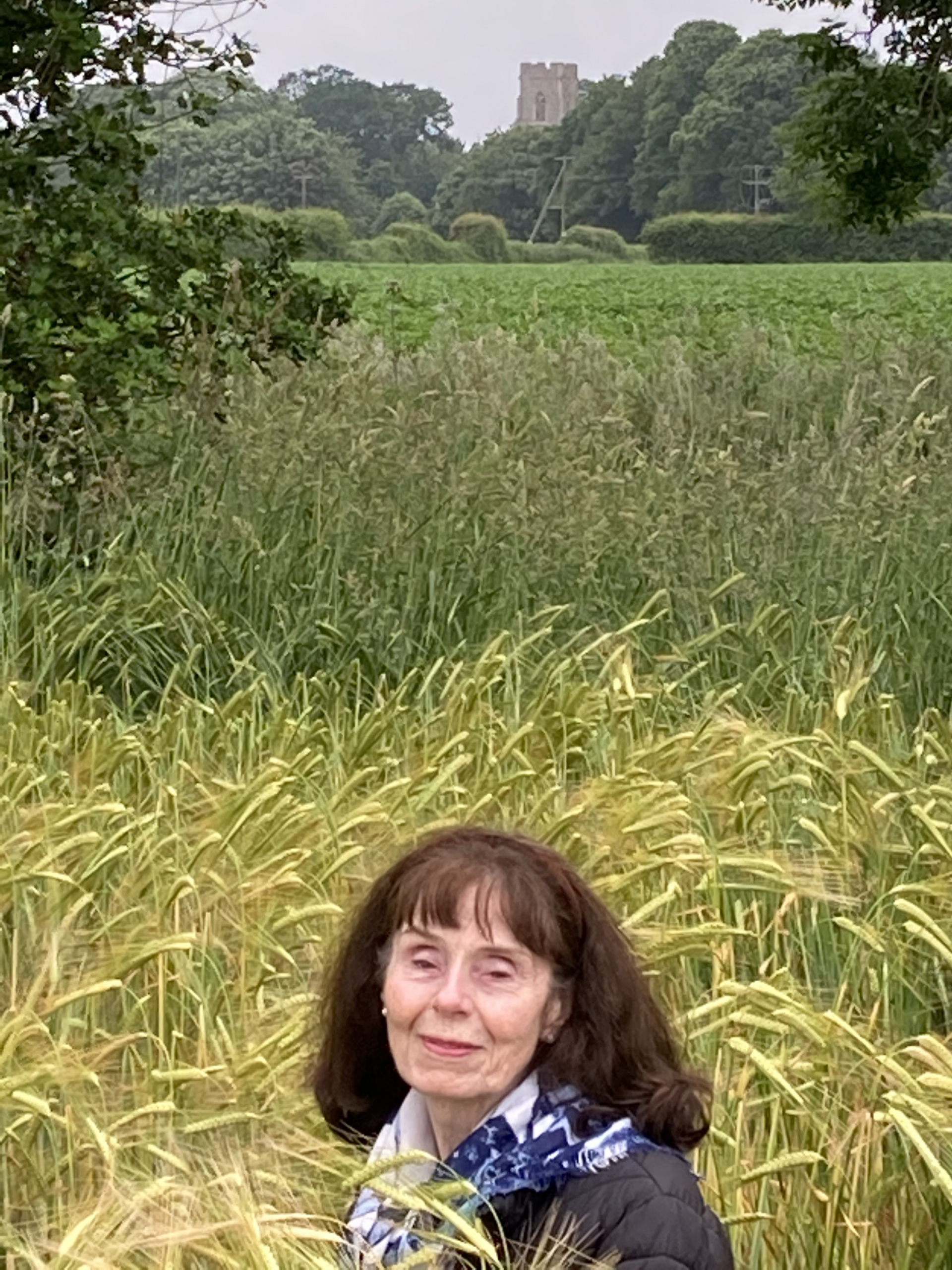Published below are articles by residents and visitors who were kind enough to write about our village:
Ingham Fair as I remember, by Anne Powles
Ingham Corner Spring – May & June 2021, by Marilyn Page
Memories from Daniel Knight part 1 (also published in July 2022 Ingham Parish Magazine)
Billeted in Ingham from August 1939 for about a year.
It was with immense pleasure that I, Daniel J. Knight, recently learned from my son of your website depicting the life and events in Ingham today. My own affection for Ingham blossomed during the late months of 1939, when – with my sister Pat and cousins Joan and Joey Bethell – I was evacuated from my Eastend London school to Norfolk.
On our arrival in Ingham we were assembled in (I think!) the village school; just down the road to the right of the church. After being fed sandwiches and milk we were all sectioned off, and sent to our new billets.
My sister and cousin Joan were placed with a Mrs Hales, who we later learned was the mother of John Hales – the valet to HRH the Duke of Kent – and who died with the Duke in a tragic air crash in the R.A.F. Mrs Hales was wonderful to the girls and they were very happy to be with her.
By the strangest coincidence, my cousin Joey Bethell and I were also billeted with Mr and Mrs Hales (George and Sarah) at “Raxawa”, Sydney Street, Ingham, but I don’t know if they were related! By this time ‘my’ Mr and Mrs Hales had already housed another school mate – Joey Lowe – so this suddenly made Sarah and George Hales the foster parents of three boys – 10, 11 and 12 years of age in 1939 – I being the youngest and my cousin the eldest. It was then that my affection took root.
Mr George Hales was the village carpenter with a love of sports, and although he suffered an eye injury playing cricket as a young man, he was a fantastic marksman with a 12-bore shotgun. His father – George Sr.- (Grandad to us boys!) was the retired village blacksmith, and it is my belief that Mrs Sarah Hales had been a school teacher in her younger days, and proved to be the most caring and loving foster mother anyone could wish for. She was always ready to share and solve our problems, and was a stickler for making sure we each did our school homework and wrote to our parents regularly. So it was between them that they taught us London kids the joy and beauty of country living. Our introduction to carpentry was first class with ‘hands on’ instruction on gate mending, barn repair, wagon fixing, and a whole list of other carpentry requirements.
‘Grandad’ would fascinate us with tales of horse shoeing, ironwork, and all things to do with an anvil. Mrs Hales taught us the nature side of things, such as names and habits of birds and animals, and was very good at quoting historical events.
Another big attraction for me was the Hales’ pony Betsy. Because we shared the school with the local children we alternated with them – mornings one week and afternoon the next week – this gave me plenty of time to become acquainted with Betsy, and I would spend hours in her stable cleaning and grooming. I was also very fortunate to meet Mr. Allard, whose farm was at the end of Sydney Street at the junction with Sea Palling Road. He had two massive ‘Shire” horses, and I was permitted to sit on their backs as they made their way home to their stable after a day of working in the field across the road from “Raxawa”.
These, and many more memories run through my mind, and I have an undying love for Sarah, George and Grandad Hales. Regretfully, they have all passed away – as have my sister and cousins – but the influence of my stories of my life in Ingham has resulted in my daughter – a Veterinarian – registering her herd of cattle under the name “Raxawa” in Prince Edward Island, Canada, and it also forms part of her e-mail address!
So to the people of Ingham I say “Thank you” for having me at the time of trouble, and every good wish to you for a wonderful future.
Sincerely,
Daniel J Knight
Guelph, Ontario, Canada
Memories from Daniel Knight part 2
Since my previous message, my son David has found from the 1939 Registry that Raxawa was in fact #54 Sidney Street, as you can see in the attached image.
Also, David did some Hales genealogy on ancestry.com and discovered that Mr Hales was George William Hales and he married Sarah West in 1920. “Grandad” was William George Hales, the village blacksmith. My sister Patricia was also billeted during this Registry with a Margaret Wenn (99 years old) and a Rachel Wenn, in the village of Ingham at an address called “Stone Hose” (you can see this also from the attached image). Obviously, after this 1939 Registry, my sister Pat and cousin Joan were then billeted with the other Hales family.
You also asked me how long I was in Ingham. To the best of my memory I was evacuated from London sometime towards the end of August 1939 – actually before the declaration of War (September 1, 1939) – and returned to London at the end of August, or beginning of September, 1940. This timing was rather ironic because I was evacuated to Norfolk to be safe from expected air raids on London, but was returned to London in time to endure the Blitz! Apparently the government – in its infinite wisdom – decided the evacuated children in Norfolk were not safe because German bombers might unload their un-dropped bombs on their way back to Germany.
However, during my too short stay in Ingham (about one year) I had wonderful times and I relate the following, leaving you to be the judge of your readers’ interest. Sometime towards the end of 1939 Mr & Mrs Hales (of Raxawa) fitted us three boys (Joseph Bethell, Daniel Knight, Joey Lowe) with bicycles and we decided to ride to Palling beach to sightsee. When we arrived there we found that a small ship had run aground during a storm and its deck load of timber had broken loose and was being washed up on the shore. We therefore decided that Mr (George) Hales (he was a carpenter) could use the wood, so we “jerry-rigged” our bicycles to carry as much as we could, and struggled to wheel our loads home to Raxawa. Unfortunately, the sea water had ruined the wood for much use, by Mr Hales did make for us boys a fantastic sledge and “grandad” (William Hales) fired up his forge and made steel runners for it. Needless to say, we were envied by all our school mates, but we all had great fun sledging down the slopes in the dell between the school and Holy Trinity church.
On another occasion I went with Mr Hales to mend a farm gate in Hickling. When the job was done we called in to a village pub on our way home (perhaps on the Whinmere Road). At the bar were two gentlemen Mr Hales knew and a conversation was soon started, and resulted in Mr Hales and I being challenged to a game of darts! – Well, being the sportsman he was – Mr Hales couldn’t refuse. I had never played darts before and I had no idea of what I was doing nor how the scoring was going but when my turn came round again Mr Hales said “Hit the bull’s-eye Danny boy and we’ll have won the game – and miracle of miracles – I hit the bulls-eye! Mr. Hales was awarded 2 pints of ale and I was given a large glass of shandy and a bag of Smith’s crisps. I felt as though I had won the championship for something and this ‘victory’ was re-told much to my delight many times.
It may also be interesting to know that a certain amount of fame came to a couple of people involved with us evacuees: Our London parish priest (St Winifred’s, Manor Park) came to visit us in Ingham and was able to say Mass at Christmas for us in the village school. His name was John Heenan and he was later elevated to Archbishop of Leeds and then Cardinal. Another person of note was my cousin Joan Bethell, who was billeted with my sister Patricia. Joan gained fame as the radio/TV and recording star Joan Regan.
Again, I thank you for allowing me to air my memories of happy times and I look forward to reading of future events that are to take place in Ingham.
Sincerely
Daniel J. Knight
Guelph, Ontario, Canada
Ingham Fair as I remember, by Anne Powles
What excitement on the Sunday when all the fair lorries and caravans passed my house on their way to the field opposite the Swan. I could hardly wait for Monday evening when the fair opened.
There was Rhubarb Underwoods Cake-Walk, Donny and Denny Gray’s Speedway and Dodgem Cars. There were Swingboats and kiddies roundabout, loads of side stalls including win a goldfish (which you carried home in a jam jar if you were lucky enough to win), coconut shy, and darts.
A fair organ would be playing all the time. Everything was powered by generators. There was Mrs Gizzies homemade rock and toffee apples. As a child I think it was probably as exciting as Christmas. Roger tells me he and his mates cycled from Stalham to help put the stalls up.
When I was 11, I came home from the fair to find my sister had been born.
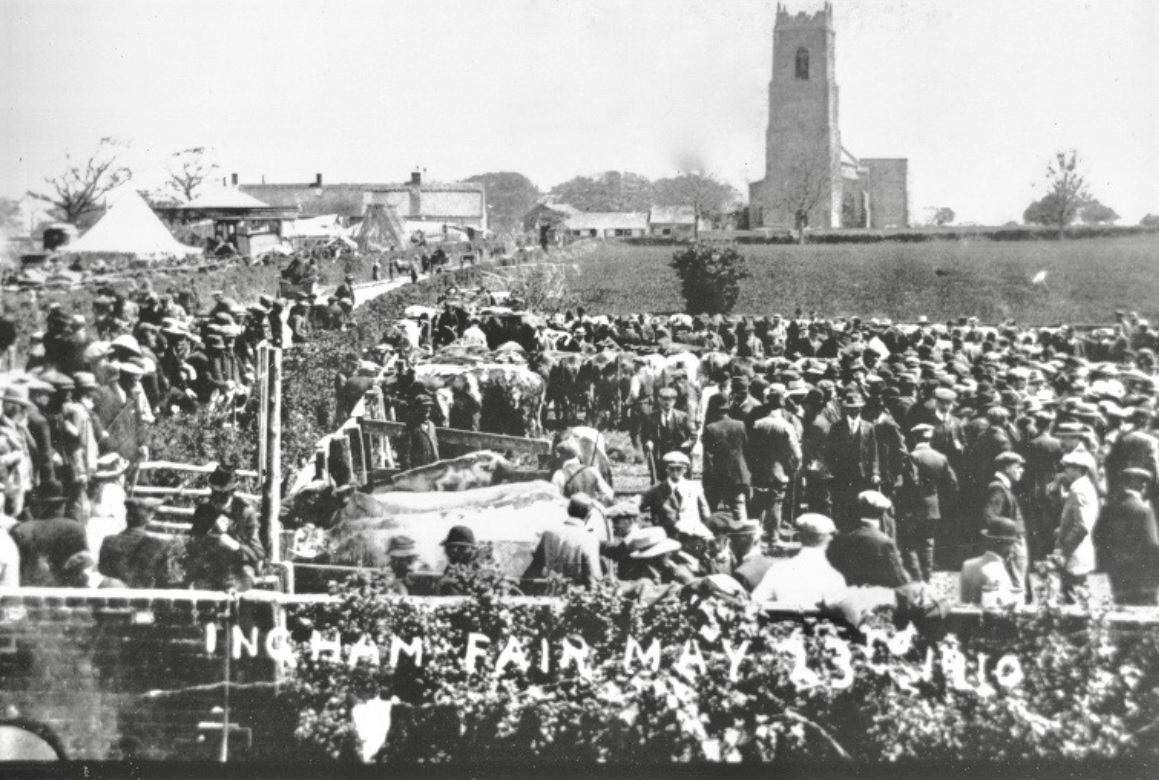
Angela found this photo of the Fairstead in the attic. The cattle market, in the foreground, is where Frontiers now is. The Fairstead is on the left hand side of the road leading to the church. Ingham fair was traditionally held around Trinity Sunday (end of June). The Cattle Fair ended in 1938. Ingham fair continued but petered out around 1955. (Many thanks for the information from Anne, Bunty, Faith, and Wendy.)
INGHAM CORNER SPRING – MAY & JUNE 2021, by Marilyn Page
I wanted to discover the first twenty years of my husband’s (Jeremy) life in the area, having moved to Ingham Corner (for his health), and to see it through his eyes. My article in Ingham Magazine last August brought contact from Monica, who had known Jeremy from aged 7 at Ingham School. She became my informative travel guide and companion, generously offering to drive me to the places Jeremy would have known.
When Ingham Church came into view, it felt like coming home. My four cats, somewhat bemused at the long journey, immediately took to life at the cottage, with its comfort, peace and sunny flower filled garden. I retired early to a room overlooking the fields, distant Long Lane, and crows cawing in far trees as night fell.
I awoke to a milky sky at dawn with the delightful chirruping of many sparrows, nesting in the eaves. To sit in the porch to watch the sun rise over fields was a pleasant time to plan the day ahead.
Our first outing was a three mile walk from the junction of Long and Grubbs Lanes, where a metal tubular barrier now exists. Monica described how after each school day, the children would hurry to the wooden bridge that was, on which they’d take in turns to summersault, playing games until tea time. The array of primroses and other wild flowers on the steep banks was breathtaking. A little further on, view of Ingham church atop the slope, appeared like a sentinel, guarding all before it. I marvelled that even the ploughing had left carved, interesting patterns in the brown earth.
Next, Monica’s pretty country lane drive to Lathams, after which we watched the water birds with a treat of icecream and chocolate! Later the weather worsened into squalls, so a potter around Stalham took me past St John’s Road (where Jeremy moved after Ingham Corner), to a misty peep at St Peter’s church, for all it meant to him.
Quiet fireside days with my cats brought the most contented times I have known in years. They ended with the setting sun’s rays filling the garden, the quiet punctuated by the cry of pheasants in the field nearby, the softening crows call, and a last chirrup – the music of the countryside he loved.
Services at Ingham Church were always uplifting in that amazing space. Once, neighbours took me to see the ruins where a monastery was attached, and nearby, the cricket ground where Jeremy’s Dad had played. The churchyard lilac was in bud, reminding me that in 1980 Jeremy was Schubert in “Lilac Time”. That glorious evening I walked Long Lane and back alone, “in Jeremy’s footsteps” one might say.
The warmer weather enticed my cats into the garden, and until a barrier could be found for the side gate, I observed their every move – tricky with the four of them!. The sun soaked bricks of the cottage made a toasty place to read and rest, with my cats snoozing on the warm flagstones beside me.
Twice I attended the art group – where I met Angela and was able to thank her for all her help – such a shame more folk do not take advantage of the excellent facilities. Twice I took a picnic to North Gap at Eccles, remembering the times Jeremy and I walked there in our youth, and the thrill of the journey when first it was made.
A drive to Hickling Broad where Jeremy’s Dad’s boat was moored, then on to a sunny evening meal at the Greyhound. Homeward through the lanes in the lowering sun, pheasants and rabbits for company, and a tiny muntjac bounding away in the distance as it set.
Monica next took me to Honing via the remains of the station, once an important hub. (Dr Beeching has a lot to be sorry for). The pristine church and churchyard, high on a hill, gave wonderful views across the valley. Then to East Ruston Vicarage Gardens – incredible and stunning, impossible to believe it was created in such a short time. A bonus was a chat to the owner Alan, well known for his contributions to Norfolk Radio, his devoted cats and puppies close by.
The Ingham Benefice Service on 30th May fell on the very weekend, 49 years ago, that I first saw the area with Jeremy. I sat at the back, beside the wall. Suddenly a shaft of light fell on only me, and a ladybird appeared on my hand, settling near my thumb. It would not move. And then it disappeared, as did the ray of light. We loved ladybirds…… After church Wendy, living at Ingham School, showed me her brick wall school kids graffiti, and close by, the “Dingley Dell” where they played at break time. A magical environment to stretch the imagination.
Quiet days kept me busy researching on line or telephoning …What happened to Jeremy’s Dad’s boat? – when did Jeremy sing at Norwich Cathedral? (August 1972) – when were Queen’s Cottages built? (early 1950’s) etc, along with completing my mother’s family history (she also came from East Anglia).
One Sunday I attended a service at Sutton church, its dear old walls seeming to put their arms around me. The older congregation in the packed church I saw two years ago, were not all there now. The deep silence of that still summer morning enabled a chat on a bench – but for our clothing and the year, it could have been two centuries ago. The long ages of care and concern were tangible.
I’d never seen old Norwich before. It was perfect weather for strolling – warm with a gentle breeze, few people around. Monica showed me many historic sites with considerable knowledge of each, in awe at their age and architecture, as was I. Elm Hill. Cow Tower and Pulls Ferry, and Norwich School, a myriad of aged plaques, secret passageways, wooden frames and cobbles…A curious ginger cat from the “teddybear shop” came over to survey us as we sat on the circular bench opposite.
Norfolk Records Office did contain Ingham School Registers. It was fascinating to examine The Records Book. Jeremy had arrived at 7 years –a clue to a prior school or his early illness perhaps? Familiar names appeared, noting doctor and dentist visits, but no mention of illness. Lessons were taken out of doors when possible: country dancing, talks from the vicar, nature walks, drawing … Idyllic! No wonder he thrived in such a place!
Next morning the sparrows fledged, as the garden became a cacophony of concerned parents and tweeting chicks, flitting everywhere until dusk, their antics punctuated by a flock of swifts swirling around, one diving into the eaves to its own brood.
A trip to Worstead revealed old buildings reminiscent of the thriving cloth industry, the huge church containing old looms and farm implements, and touchingly, old photos of those village men lost in both wars. On to the Cat Pottery in North Walsham, where I chose two small but lifelike images of past owned cats.
My search for accommodation to extend my stay to attend St Peter’s Patronal service, found kindness with Bunty. Also from Philip, who offered refuge for six hours until my room was ready. He advised contacting The Broads Authority regarding Mr Page’s boat – and yes, they provided information that it was sold three more times before its last home – dry dock in Chichester!
Instead of primroses and blossom, walks now showed wallflowers (particularly Enid’s display at the church), climbing roses and buttercups, with splashes of red poppies in field and lane. A priority was to find the very place where Jeremy had taken cine film of me in a golden field, a puzzle for many years, so searching with Monica, and by myself, brought two possibilities near the Beck Farm.
An evening drive over the Ingham area, the deep gold sun just tinging the trees and fields, was one of the most beautiful sights I have ever seen. Then on to Walcott Beach – and my goodness! Suddenly seeing the huge expanse of beach, the low evening sun dazzling on the huge waves, surf crashing wildly over the sand, was terrifying! Monica told me how sand was dredged from the far sea bed to spread over the diminishing beach.
Then – a farewell to Stalham, where Mr Page senior worked for Smallburgh District Council, St Mary’s where Jeremy’s sister was married, the Junior School, then Ingham School and Church for photos.
The 23rd was Jeremy’s birthday – another poignant day in Norwich, the city of which Jeremy was so proud. An old church renovation, bidding folk inside to view, possessed a splendid secret garden filled with wild flowers, which backed onto historic streets. We walked around the old, quiet city, and then to the Cathedral for the induction of a new Deacon, as part of Communion. Not invited guests, we sat at the back.
During “Come Holy Ghost”, from one side came the Cathedral cat “Budge”, who strolled to a disabled lady, then directly to me, his calm green eyes studying me before tiptoeing out through the opposite side. Cathedral staff told me Budge seems to sense where he is needed. Jeremy loved cats too.
Early on 25th, Monica assisted my leaving the cottage with packing and cat soothing (very important!) before driving to Philip, who could not have done more to make us welcome. Then on to Bunty for a luscious afternoon tea, where I met the incomparable Twig the elderly cat and the rumbustious dog Ruby! My cats were installed in my room with comfort and space, quickly settled, purring when I joined them later.
A Saturday afternoon walk with Bunty and Ruby occasioned a meeting with Michael at the cricket club, who had known Jeremy and his Dad, apparently a talented batsman, who recalled a teenage Jeremy watching the matches. He remembered Mr Page had been a Public Health Inspector.
At last I was there at the service I’d tried to attend for three years! Reverend Jackson welcomed me, then recounted what I’d told him about Jeremy, who had found St Peters a place of calm in his stressful life and demanding career in the Home Office. So very thoughtful and kind, a tribute to his memory, after long years when last there.
(Near Jeremy’s first home in Merton Park, is St Mary the Virgin, [where we married and he sang for thirty years] and where Admiral Nelson and his Emma worshipped. In St Peter’s Brunstead churchyard is the grave of a surgeon who served in Nelson’s ship. Jeremy knew this and his life in the south therefore revealed a happy link to St Peter’s).
On my last morning, Monica and I did one more drive to where I thought Jeremy took the cinefilm on that day of departure from Ingham in 1972. Comparable photos were taken. Not the spot to the inch, but pretty close! After coffee at Bunty’s with Philip, a farewell to Monica, a fine lunch, I offered grateful thanks to Bunty, then thoughtful Philip led me in his car to a safe place to join the motorway for home.
I can honestly say that without such outstanding help and kindness, I’d not have learned as much, or been able to live in such a wondrous place. Thank you all.
Marilyn Page
Almost (I think) the place where Jeremy took cine of me in a golden field in 1972- as next photo will show. Or do readers know different?


